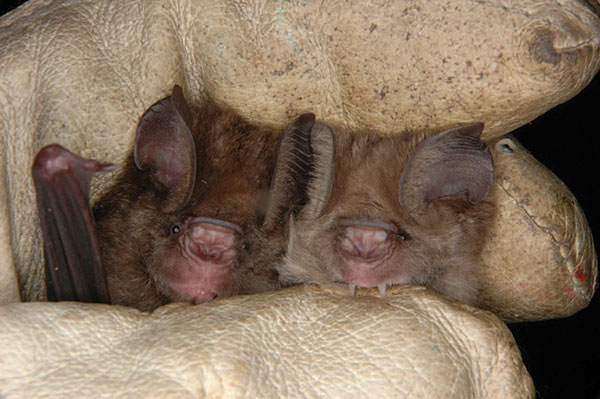Volume 15, Number 9—September 2009
Research
Distant Relatives of Severe Acute Respiratory Syndrome Coronavirus and Close Relatives of Human Coronavirus 229E in Bats, Ghana
Figure 2

Figure 2. Two morphotypes of Hipposideros caffer ruber bats held by one of the authors (F.G.-R.), who was wearing a leather glove. Photograph courtesy of Antje Seebens.
Page created: December 07, 2010
Page updated: December 07, 2010
Page reviewed: December 07, 2010
The conclusions, findings, and opinions expressed by authors contributing to this journal do not necessarily reflect the official position of the U.S. Department of Health and Human Services, the Public Health Service, the Centers for Disease Control and Prevention, or the authors' affiliated institutions. Use of trade names is for identification only and does not imply endorsement by any of the groups named above.